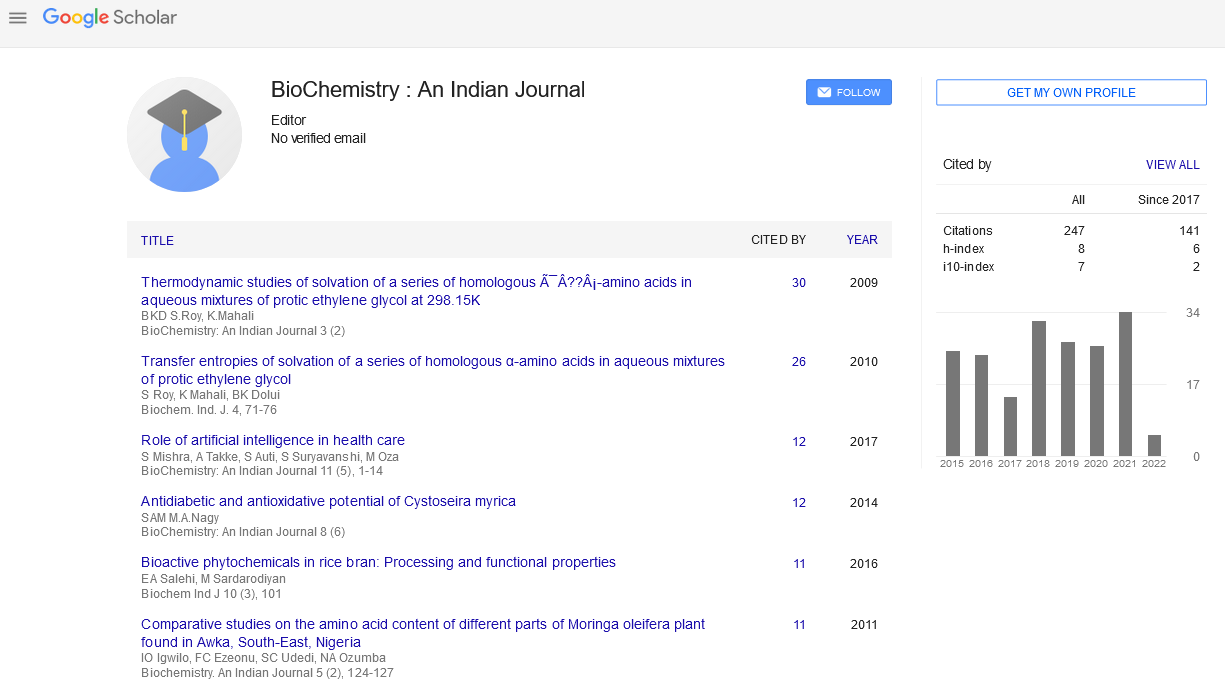Abstract
Signal transduction by C-peptide:Effect on intracellular second messengers
Author(s): I.Gamal El-din. Harisa, K.Fars Alanaziamounts along with the insulin in circulation, it considering devoid of any biological activity for long time. Therefore, this review focused on cellular signaling effects of C-peptide. This peptide causes transmission of signals from exterior of cells to their interior by signal transduction process. The binding ofC-peptidewithG-proteins coupled receptors (GPCR) activate phospholipase C, which cleaves a membrane phospholipid to produces DAG and IP-3. DAG binds all members of the protein kinase C family, which, then become activated. IP-3 causes releasing of stored calciuminto the cytoplasm, thismediated influx of extracellular calciumto intracellular leading to increase NOand cGMP. C-peptide in combinationwith insulin significantly enhances insulin receptor phosphorylation either by increase of kinases or decrease of phosphatases activity. C-peptide disaggregates insulin hexamer causing rapid appearance of insulin in plasma. Consequently, the interaction of C-peptide with GPCR influences many of intracellular processes including increase of glucosemetabolism, phosphorylation/dephosphorylation, erythrocytes function, blood flowas well as cells growth and apoptosis. Nowadays, C-peptide is biochemically active peptide and it may be elicits insulin independent effect. Therefore C-peptide may be has beneficial role in treatment of diabetic associated complications.

